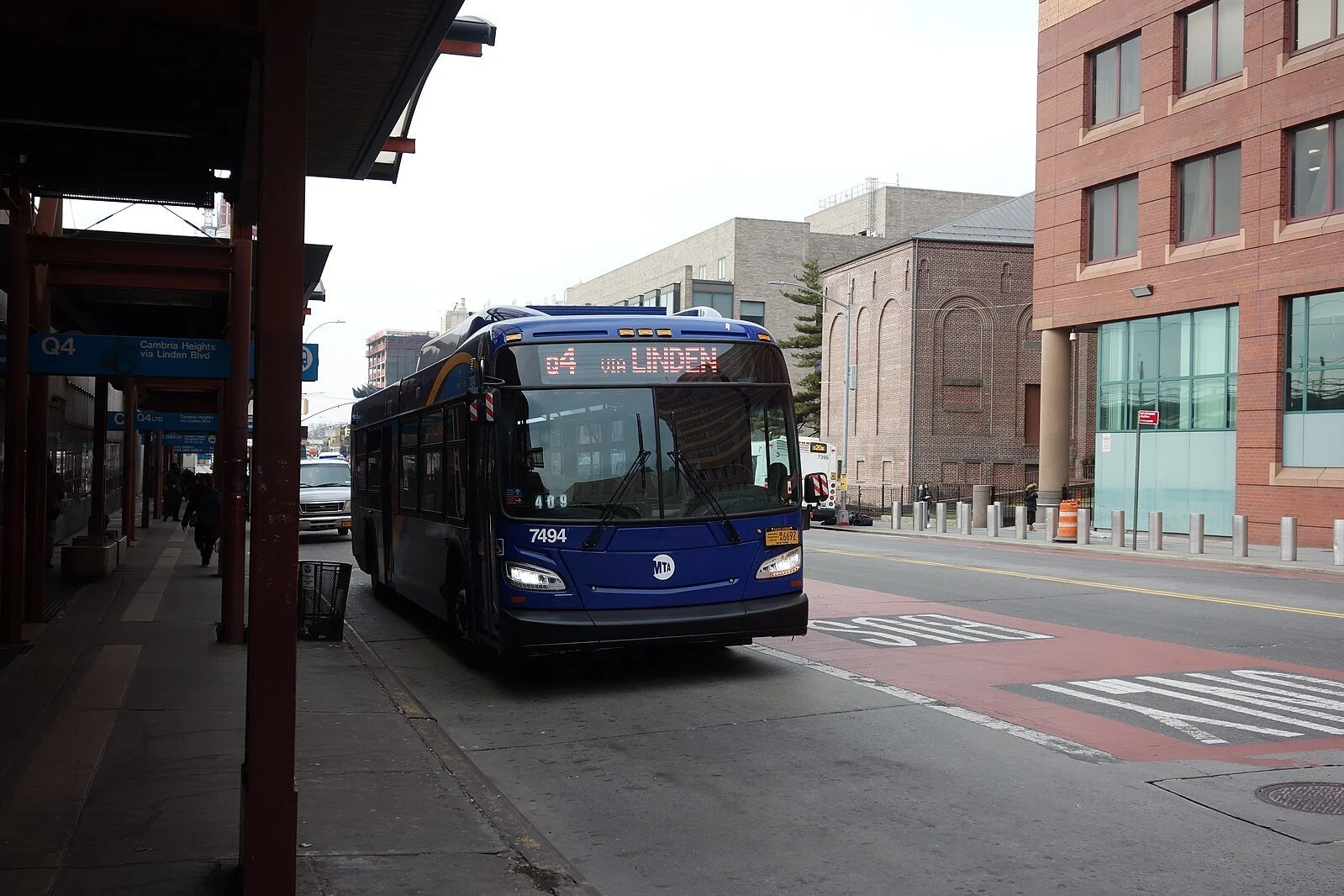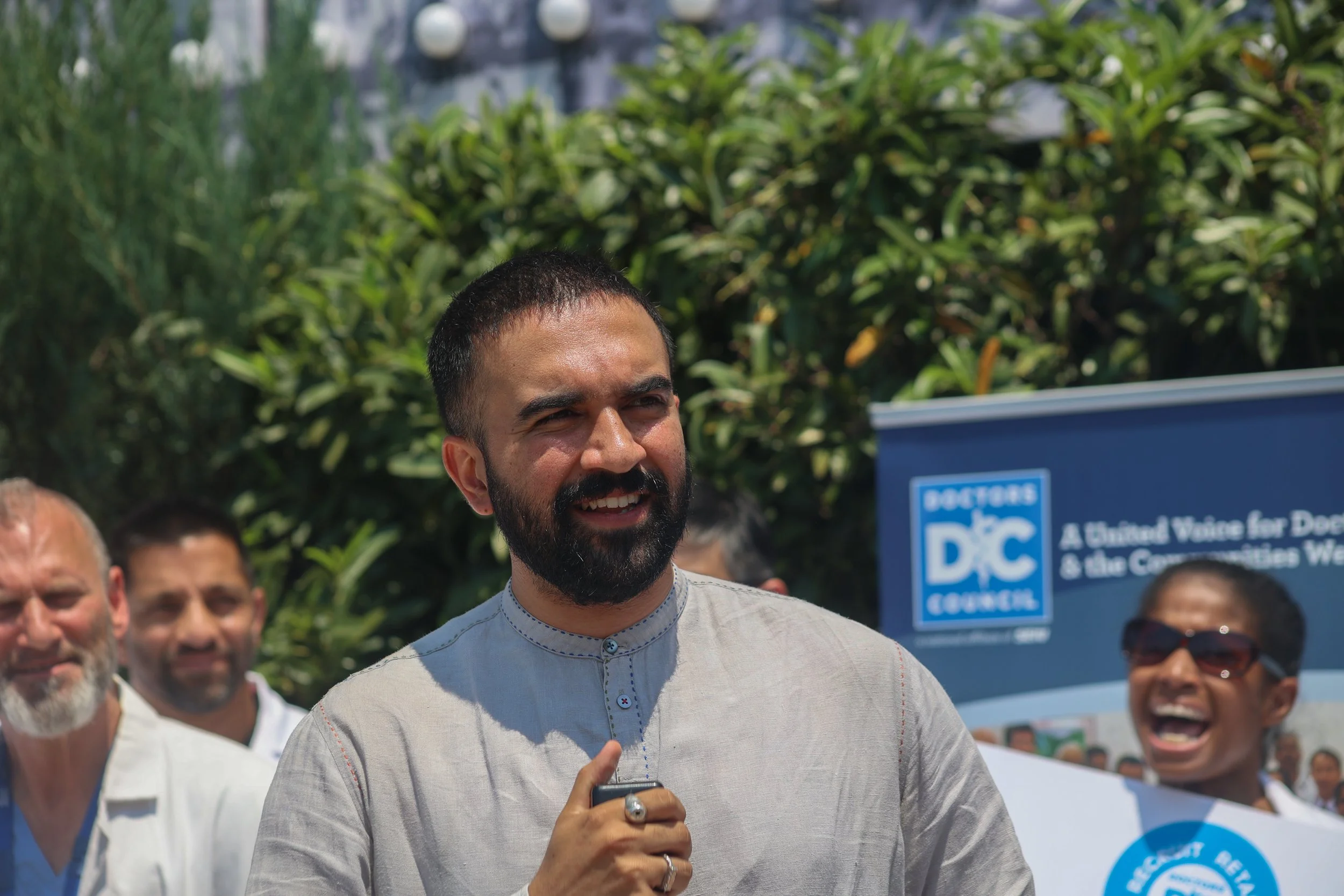Queens pol says MTA got it wrong when it canned free bus pilot
/Fare free bus routes in New York City will end at the end of the month. Local officials and the MTA are in disagreement on the success of the pilot program that provided them. Tdorante10/Wikimedia Common
By Ryan Schwach
A pilot program that brought one free bus route to each of the city’s five boroughs is coming to an end. And while the Queens lawmakers behind its creation are urging the MTA to revive it for the coming year, it seems unlikely that they will.
Come Sept. 1, riders on routes in each borough, including the Q4 in Jamaica, will return to paying the $2.90 fare for their bus rides. For the last year it was an expense they were spared thanks to the state-funded pilot program.
The point of the pilot was to assess whether or not it would be beneficial – or feasible – to expand free bus service to other parts of the city. And while the Queens lawmakers behind the program are calling it a major triumph as it approaches its end, the MTA says it doesn’t quite agree.
“These results have now shown us that this pilot has been an unequivocal success,” Queens Assemblymember Zohran Mamdani told the Eagle from his Astoria district office last week. “It has renewed my hope, as well as the hope of so many others who made this initial pilot possible, that we will be seeing a return to this kind of a pilot.”
On July 29, the MTA released a report on the first several months of the pilot, which showed that routes included in the program had a significant increase in ridership.
Queens’ free route, the Q4, which runs between Jamaica and Cambria Heights, saw a 35 percent uptick in ridership on weekdays, and a 46 percent rise on weekends.
To Mamdani, the MTA’s own review showed that the program went as well as he had hoped it would. Mamdani, who is among the several Democratic Socialist members of the state legislature, said that the data validates the project, and shows that it achieved its goal of assisting New Yorkers in need.
“[The pilot] was felt by working class New Yorkers in every single borough,” he said.
Mamdani cited the increased ridership numbers, as well as a decrease in crime along the routes as proof the pilot worked, and that it should continue.
However, he and the MTA do not see eye to eye, even when looking at the exact same data.
During the last state budget cycle, the program was not renewed despite being included in both the Senate and Assembly’s proposed budgets.
“The MTA has continued to push back against this pilot in whatever form has been suggested, and ultimately, this year, that push back proved to be decisive,” Mamdani said.
State Assemblymember Zohran Mamdani is a major proponent of the fare free bus plan, and believes that data shows it should continue for New Yorkers. Eagle file photo by Ryan Schwach
MTA brass, among them current interim New York City Transit President Demetrius Crichlow, expressed dissatisfaction with the pilot, saying it didn’t bring back the numbers they wanted.
“The data…shows a lot, but we did not see anything that aligned with that initial intent,” Crichlow said at a meeting of the MTA’s busses committee on July 29, the same day the program’s evaluation was released.
The MTA declined to provide answers to a number of follow up questions on its evaluation of the pilot last week, instead directing the Eagle to the July 29 committee meeting.
The agency’s main gripe was that the pilot didn’t attract enough new riders – data showed that 12 percent of the pilot’s riders were new to the system.
“It wasn't a surge of new people to the transit system,” said MTA Chief of Strategic Initiatives Jon Kaufman. “To get cars off the road, we're not seeing that here from this, and again, for me, it's predominantly benefiting existing riders.”
MTA officials did not clarify what percentage of new riders would have qualified the program as a success.
According to the data, 27 percent of the new riders came from other routes, potentially seeking out the cheaper alternative. Other new riders included those who either previously walked, drove or weren’t otherwise making the trip along the route. About 11 percent of new riders were using a car or taxi previously.
Unlike the MTA, Mamdani doesn’t see that 11 percent as a shortcoming, and lauds the fact that the pilot got at least some people out of cars and into mass transit.
“I just have a hard time understanding how anyone, beyond those already motivated in support or opposition, could look at 30 and 38 percent increases in ridership within the context of a struggle to return ridership to where it was pre-COVID and say that this is not successful,” he said.
The Q4 route, according to the data, had around 3,744 new riders between Sept. 2023 and May 2024, which translates to a little over 400 of those riders choosing to not drive on the often crowded Southeast Queens roadways.
Most of the new riders come from the same economic background as those who were already riding it in the first place, with 44 percent of new riders making less than $28,000 a year. For existing riders, 46 percent were bringing in that income.
During the July 29 hearing, the MTA officials said they had worries about the missed revenue from the pilot, as well as bus speeds decreasing as a result of the uptick in ridership. The Q4 saw a 0.1 percent decrease in service delivered, which measures the percent of scheduled buses that are provided during peak hours. The Jamaica route also saw a 4.8 percent dip in bus speeds, and a slight jump in travel times for commuters.
“I think there were different people who had different ideas as to what success here would be like,” Kaufman said.
Mamdani, who is rumored to be considering a challenge to Mayor Eric Adams next year – during his interview with the Eagle, Mamadani said he is “continuing to think about” a potential run – said the MTA had it out for the plan from the start.
“The MTA has sought to portray these results, which are on the face of it incredible, as being unremarkable due to their resistance to the idea in the first place,” Mamdani said.
Mamdani argued that the MTA was always going to “spin” the numbers, because they were resistant to an idea that would substantially change their model for fare collection, he claimed.
“Their pushback has ranged depending on when we have been talking about this,” he said. “At one point, the pushback was that a pilot such as this would increase rates of fare evasion on surrounding routes. This pilot has shown that it, in fact, has had no impact on the rates of fare evasion. We've heard concern after concern that has not been born out in the actual results of this.”
While fare evasion did increase near the fare free routes, it was less than a percentage point off of the systemwide average.
Regardless, the program will cease at the end of August, which will expectedly lead to some disappointment from riders who haven’t been paying for the route for the last several months.
The MTA said they will provide proper signage, so there isn’t any confusion about the return to full price.
“When this pilot sunsets, we will face a reckoning from those very New Yorkers as to whether we have their backs or not,” Mamdani said. “I think there will be deep disappointment and shock from New Yorkers who have found one moment in their day to day life where their need has been taken care of.”
However, Mamdani hopes that there can be renewed energy behind the program ahead of the next budget cycle in the spring.
“My hope is that this is but the beginning of a renewed push to ensure that when this pilot sunsets in September, that New Yorkers then see another iteration of it next year,” he said.
“I think that what will win the MTA over is what New Yorkers have shown us and their preferences,” he said.





